

General Photography Tips
 1.) Get close--don't be afraid to fill the view-finder with your intended subject.
1.) Get close--don't be afraid to fill the view-finder with your intended subject.
2.) Whenever possible keep the main focal point of your shot off center. This makes for a more interesting and dynamic picture.
3.) Take lots of shots of your subject from many different angles--the more you have to choose from, the more likely that you will get a shot or two you are really happy with.
4.) Try getting out early or late in the day (about a half-hour after sunrise or a half-hour before sunset). The light at these times of the day is less harsh and tends to give your pictures a "warmer", more pleasing look.
5.) Take a closer look at things around your house, in your yard, and on your way to work--you might be surprised at what you find. Photo subjects don't have to be exotic to be interesting and compelling.
6.) Always try to carry extra batteries and a spare memory card. There's nothing worse than finding a great subject, with perfect lighting, only to discover that you have dead batteries or a full memory card.
Landscape Photography Tips
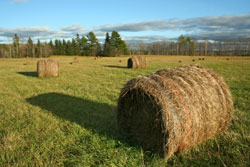 1.) When possible compose your shot to include a portion of the foreground--this leads the viewer's eye "into" the picture.
1.) When possible compose your shot to include a portion of the foreground--this leads the viewer's eye "into" the picture.
2.) Although landscape shots include a lot of subject matter, be sure to focus on a distinctive feature of the scene you are shooting--this gives the shot visual focus.
3.) The sky is often a key part of landscape shots, so avoid shooting when the sky is bland or washed-out--if you have to shoot when the sky is less than ideal, try to include as little of the sky as possible.
Flower Photography Tips
 1.) Try to take flower shots when there is little or no wind--most flowers are easily blown about, and even slight movement can cause blurring of your subject.
1.) Try to take flower shots when there is little or no wind--most flowers are easily blown about, and even slight movement can cause blurring of your subject.
2.) Examine your subject closely to make sure it is in good condition--torn petals, bug chewed leaves etc. are easily overlooked, but the camera sees all.
3.) A little water doesn't hurt--dew and raindrops add visual interest to your shot.
4.) Bugs and such can also add visual interest to a flower shot--think twice before you brush them off.
Pet Photography Tips
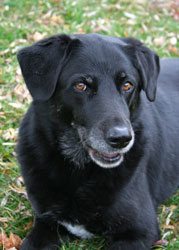 1.) Allot a whole afternoon or equivalent amount of time for pet photos--unless you have a very docile and cooperative pet.
1.) Allot a whole afternoon or equivalent amount of time for pet photos--unless you have a very docile and cooperative pet.
2.) Try following your pet around, or let them follow you, whichever the case may be, and take a "wait and see" attitude. Have your camera ready to shoot--when those perfect poses come along they usually only last about a second or two.
3.) Talk to your pet and even make unusual noises from time to time--this can produce some interesting expressions on your pet's face.
4.) Praise your pet when they give you a good pose--good luck--pet photos are tough.
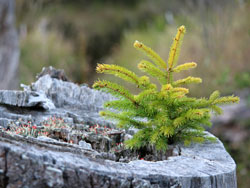 Depth of field (DOF) is probably a term you have heard used in photography often enough, but what does it really mean, and how can you use it to make your digital pictures better?
Depth of field (DOF) is probably a term you have heard used in photography often enough, but what does it really mean, and how can you use it to make your digital pictures better?
The term depth of field refers to how much of your picture is in sharp focus. For example, in portrait shots you will notice that the background is often blurry, while the subject is clear and sharp. Pictures like this have a shallow depth of field.
You have probably also noticed that in landscape shots everything in the picture is often sharp and clear, all the way from the dead tree in the foreground to the mountains off in the distance... Read More
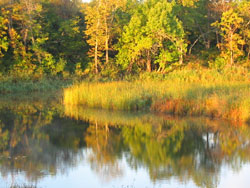 What does ISO stand for, you ask? ISO stands for International Standards Organization, which refers to the group that set the standards for film speed. Luckily, this doesn’t have anything to do with what you need to know about ISO.
What does ISO stand for, you ask? ISO stands for International Standards Organization, which refers to the group that set the standards for film speed. Luckily, this doesn’t have anything to do with what you need to know about ISO.
ISO, as it relates to digital photography, is an indicator of how sensitive to light your camera’s sensor is, and most digital cameras allow you to adjust this sensitivity. The majority of low to mid-range digital cameras have an ISO range that goes from somewhere in the neighborhood of 50 or 100 up to around 400 to 800... Read More
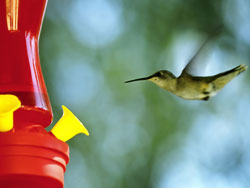 Shutter speed is perhaps the most creative adjustment available to the digital photographer. It allows us to freeze action or use motion blur to create a variety of effects, and is expressed in seconds or fractions of seconds depending on the length of exposure.
Shutter speed is perhaps the most creative adjustment available to the digital photographer. It allows us to freeze action or use motion blur to create a variety of effects, and is expressed in seconds or fractions of seconds depending on the length of exposure.
A high shutter speed (1/1000 of a second or higher) can freeze even very fast moving objects dead in their tracks. However, you will need to keep a couple of things in mind:
1.) You are going to need a brightly lit subject as shutter speeds this high don’t allow your camera much time to gather light for exposure... Read More
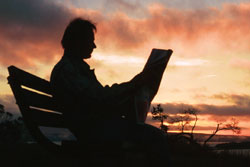 “Never shoot towards the light.” We’ve probably all heard this old photography “rule,” but, for now, let’s treat it more as a general guideline. If you want to shoot some photos that really pop, that really jump out and grab you—shoot towards the light.
“Never shoot towards the light.” We’ve probably all heard this old photography “rule,” but, for now, let’s treat it more as a general guideline. If you want to shoot some photos that really pop, that really jump out and grab you—shoot towards the light.
Silhouettes are photos where your subject is dark against a bright background. We have probably all taken shots like this by mistake—when taking a picture of a friend or relative who was standing in front of a window, or standing with the sun behind them, etc... Read More
Composition and Cropping Tutorial
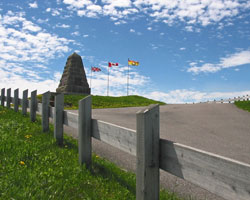 Composition and cropping are very basic digital photography tools that you can use hand-in-hand to produce stunning results. First you use composition to arrange the main elements of your photo in a pleasing manner. Then you use cropping to fine-tune the image by removing unwanted elements and further adjusting the composition. With practice, you can refine your shots to look as good as you imagined them when you pushed the shutter button.
Composition and cropping are very basic digital photography tools that you can use hand-in-hand to produce stunning results. First you use composition to arrange the main elements of your photo in a pleasing manner. Then you use cropping to fine-tune the image by removing unwanted elements and further adjusting the composition. With practice, you can refine your shots to look as good as you imagined them when you pushed the shutter button.
First, let’s take a look at the most basic rule of composition, the rule of thirds: Imagine your viewfinder having a grid on it that looks like a tic-tac-toe game... Read More
To download free images for websites: Click Here